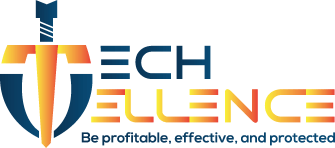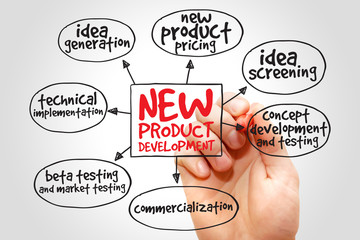 How the Techellence CIO directed IT governance, transforming CMMI level 1 organization to that of level 4.
How the Techellence CIO directed IT governance, transforming CMMI level 1 organization to that of level 4.
Dr. Sang Sur's most significant strength that sets him apart from other technologists, as evident from his results, is that he is business-minded, yet, he can roll up his sleeves and get down to the details as necessary. He sees things from a bigger picture and can drill deep to solve complex problems.
In identifying methods for IT governance, the first step is to understand and assess, establish the current state, and improve it from where it is. There are no one-size-fits-all solutions, and it depends on the organizational vision and how IT should align to meet it in partnership with the operational teams. The need to identify plans from their current state is because actual lasting changes occur through contextualization instead of dogmatic demands on how things have "always" been done.
In his previous assignment, Dr. Sur was brought in to revamp an IT team whose morale was low and performed poorly in the sight of other employees and company leadership. People with higher ranks in a hierarchical company often complained about non-working systems. When they heard of such issues, the IT team members bounced from issue to issue to fix something, only to receive negative feedback for addressing it late or not handling it well enough. The IT members had a shallow view of themselves, lacking confidence that their skills provided any value. People held on to their positions for their livelihood because they felt the results they could produce were not of value. In terms of a standard, this was a CMMI level 1 IT organization, where the environment was unstable, highly reactive, and often putting out fires. Capability Maturity Model Integration (CMMI) measures an organization's process effectiveness and has been developed since 1987.
Currently, the team is operating at CMMI level 4, where there is consistency in the results produced, and the users can expect a certain standard of performance each time. All plans are documented and reviewed for scrutiny by stakeholders. The status of IT functions is updated each week to see progress and new risks while executing the plans and handling the new issues that arise. There are multiple data measurement points to see where the IT organization stands today, and they continue to improve their operations.
After evaluating the environment, the first action was establishing a recurring all-IT meeting where Dr. Sur could provide formal communication where each member was expected to take action based on his direction. In the first meeting, he presented the idea that companies cannot run without IT today. IT organization is the fuel to enable businesses to succeed, and "you" play that vital role. Dr. Sur taught them their need to partner with their "customers" and learn what they need. He also emphasized that IT's greatest strength is the ability to think and solve complex problems. People look to "us" to provide a solution using technology. "We" can offer our skills to enable our company to succeed through the things we do. Dr. Sur also told them that he wants them to be so good at what they do that other companies want them, yet, they would choose to stay because they have great pride in the IT team they will build. Dr. Sur held several one-on-one meetings with each team member and provided several anonymous surveys to get their feedback on their fears, concerns, and desires.
Dr. Sur also spent intentional time with his IT team in small groups and individually. Interacting with members at the lowest levels was considered odd, like breaking a taboo, in a hierarchy-based company. Still, his desire to get to know people at an individual level led to this, and it produced amazing fruit. In the weekly small group meetings, Dr. Sur often chose teachable topics related to their current work and welcomed interested team members to join. At times, there were two people and nearly the entire IT staff at others! Small group times were always the best. At each meeting, Dr. Sur would ask if there were any work-related issues or concerns they would like to think through together. When they were exhausted, he spoke about the topic and welcomed conversations to connect their current way of work and suggested improvements. Dr. Sur spoke on Agile, IT security, project management, presenting to executives, business analysis, customer obsession, coaching, database structures, and disaster recovery planning.
Dr. Sur worked with the leads to identify the existing and forecasted "projects" to begin the documentation process. Through this process, it was evident that there were many unaccounted outstanding need-to-anticipate demands, broken security issues, and a compilation of standard "please fix this for me" issues. Dr. Sur worked with the then IT "assistant managers" and the existing director to draw a picture of a potential future org chart with four specific functions: Product Development, Infrastructure, Service Management, and IT Field Services. With excitement, the leads continued building a future layout that might work.
After thorough scrutiny, Dr. Sur presented this to the company's president, who was happy to approve this structure. Along the way, Dr. Sur hired another director and promoted the "assistant" managers to be full managers.
As these team members formed and honed their specific roles, Dr. Sur stayed close to his key customers, the chiefs of business operations, to learn their needs and deficiencies. Through many conversations, he shared about the new way IT was transforming and welcomed them to come directly to him if they were unsure how to handle any IT problems. He sought to prioritize the issues affecting people of high ranks to minimize conflicts.
In addition to the monthly all-IT meeting, Dr. Sur continued to expound upon their specific roles, often using video game illustrations since many IT members pursued technology due to their love for video games, at least while growing up.
The IT team had a slogan repeated through many communications: "Lead with Excellence. Experts at every level." It was worded that way because of the importance of achieving excellence every time while serving our customers. (In Dr. Sur's team, "serving" was used synonymously with the word "leading.") "Excellence" refers to ensuring the customer's success and staying with them until we attain it. The IT members built a mindset of customer obsession and recognized that their success comes from the success of their customers. "Experts at every level" refer to the collaboration with the customers to meet them where they are and support them well because "we" have an expert understanding of the customer's work and technical needs.
The following year, Dr. Sur compiled the work at hand to build an "IT Plan" projecting the work for the coming year. He shared it with all directors and managers of the company in both documents and through a formal presentation. The goal was to show the people their needs are on our radar with the expected timing to start and finish their work. It also showed the resources and collaboration required on their part.
Three fundamental formal changes affecting all business users were how we captured their needs and translated them into activities:
- First was the IT helpdesk ticketing system, which funneled most of the needs into one system for full tracking, visibility, and management. (The impacts of improving the helpdesk ticketing system are explained here)
- The second change was how IT would handle new features that will accelerate how we do business. A specific form was required to be filled out specifying the new feature the customer(s) were requesting, providing a business justification for the costs saved or profits made due to the development. Dr. Sur reviewed their responses, then racked and stacked the existing requests to make decisions based on the highest business needs. Dr. Sur would also run his rationale with the company president and other peer executives to ensure they agree with the assessment. The Product Development team handling these assignments organized themselves into agile/scrum methods to review their work and build the most significant values two weeks at a time. (The impacts of improving the Product Development team are explained here)
- The third change was how the organization handled enterprise-affecting projects. Instead of operating with uncertainties, Dr. Sur put formal project management practices in place, showing the projected work, the resources required, the costs involved, and the estimated timeline for project completion. The plan was disseminated to all stakeholders to weigh their thoughts and concerns. The stakeholders now had the buy-in of the project and could see weekly results and progress to ensure the project was still on target. There was also a greater collaboration between non-IT and IT members as a result, where previously, the IT team was often left to try to solve the problem independently, to learn that their solutions did not optimally support the business members.
Additionally, there are not-so-visible activities such as security audits across the company by an independent IT security personnel, whom Dr. Sur developed and provided specific directions personally. Then there were enterprise-wide activities such as IT security training across the country, which Dr. Sur often led on his own. Digital transformation initiatives enabled the employees to work from home during the impacts of the pandemic. Finally, the database restructuring endeavor continued to enable fluidity of data across analytics, applications, and the eyes of the company's customers.
The team has come a long way. They began with a mentality as lackeys and now thrived as leaders. They held specific responsibilities and were proud of the work they did. They recognized their need for training and received them directly from Dr. Sur or through formal education with his approval. They continued to thrive through data and process consistency, meeting the requirements expected for a CMMI level 4 organization.

 How the Techellence CIO enabled the highest revenue in the company’s history of $1.5B amid uncertain times while supporting a massive, nationwide retail organization of 70+ stores and 10+ warehouses with a small IT workforce.
How the Techellence CIO enabled the highest revenue in the company’s history of $1.5B amid uncertain times while supporting a massive, nationwide retail organization of 70+ stores and 10+ warehouses with a small IT workforce.  How the Techellence CIO generated profits handling acquired companies for a global Fortune 500 software company leading to a successful exit of $18.9B.
How the Techellence CIO generated profits handling acquired companies for a global Fortune 500 software company leading to a successful exit of $18.9B.  What is the role of an IT organization? A response from the Techellence CIO, who established a flourishing IT organization that other departments aspire to join.
What is the role of an IT organization? A response from the Techellence CIO, who established a flourishing IT organization that other departments aspire to join.  How the Techellence CIO enabled $53M revenue, exceeding aggressive projections by more than 35%, by successfully handling an acquisition transition of a $550M investment.
How the Techellence CIO enabled $53M revenue, exceeding aggressive projections by more than 35%, by successfully handling an acquisition transition of a $550M investment.  How the Techellence CIO manages change by tackling the highest priority issues increasing customer (corporate employees and leaders) satisfaction and trust by 30%+.
How the Techellence CIO manages change by tackling the highest priority issues increasing customer (corporate employees and leaders) satisfaction and trust by 30%+.  How the Techellence CIO rehabilitated the software development team to focus more on the customers, directly impacting the company’s profitability and reducing financial losses.
How the Techellence CIO rehabilitated the software development team to focus more on the customers, directly impacting the company’s profitability and reducing financial losses.  How the Techellence CIO further reduced attrition and morale loss of people whose companies were being acquired, facilitating acquisition integration success.
How the Techellence CIO further reduced attrition and morale loss of people whose companies were being acquired, facilitating acquisition integration success.  How the Techellence CIO enabled a $2M startup to build a globally scalable efficient system.
How the Techellence CIO enabled a $2M startup to build a globally scalable efficient system.